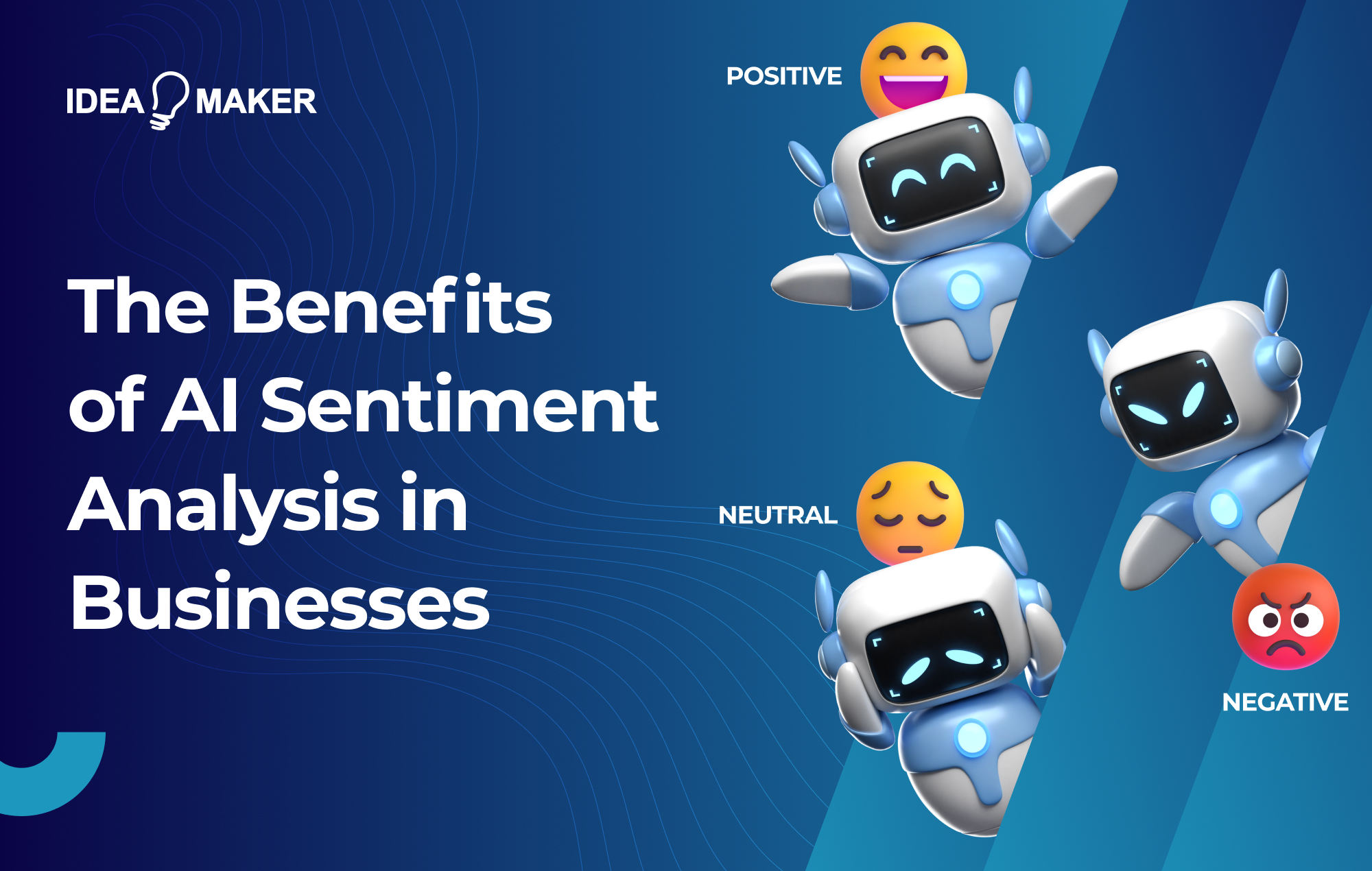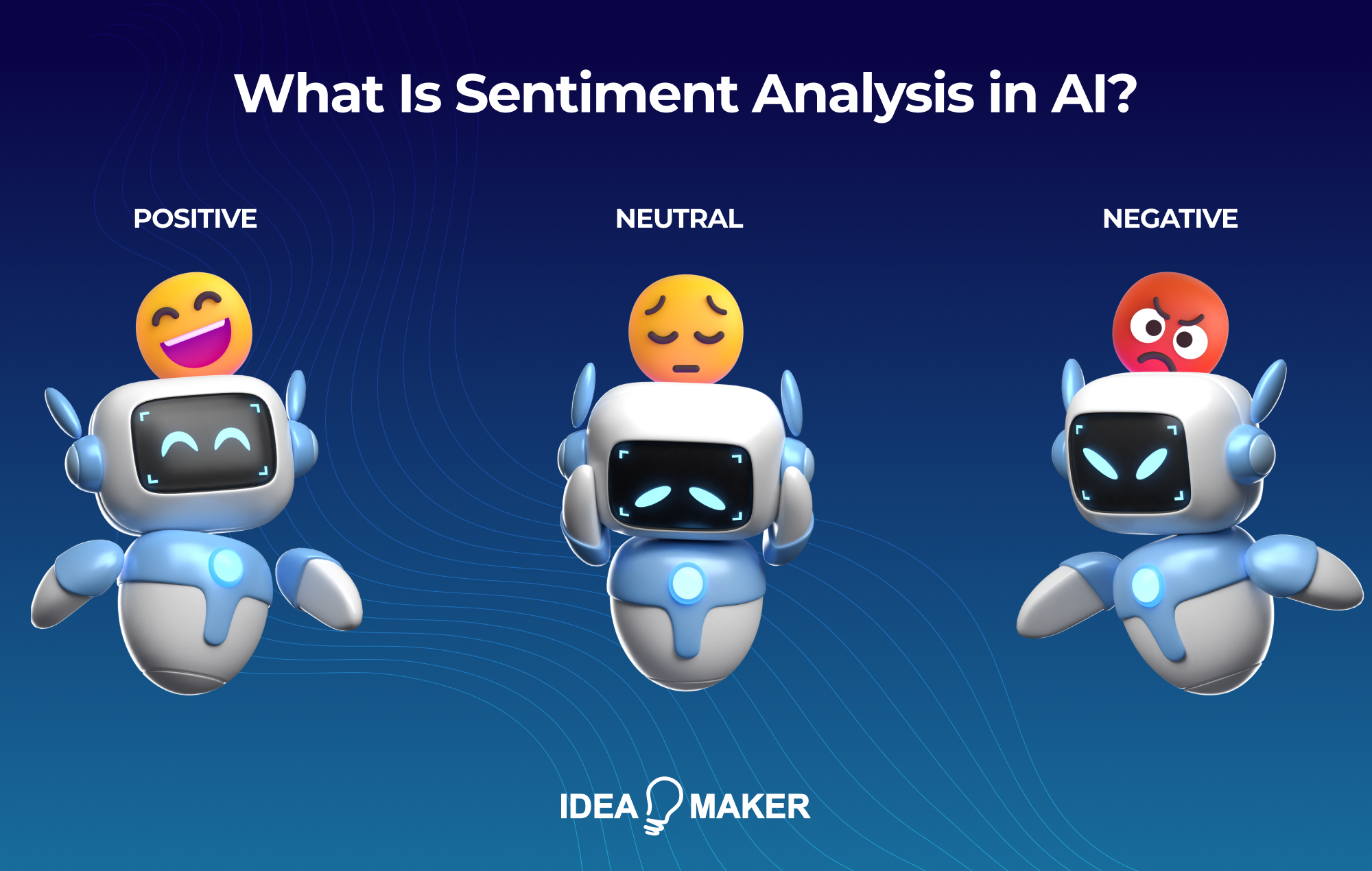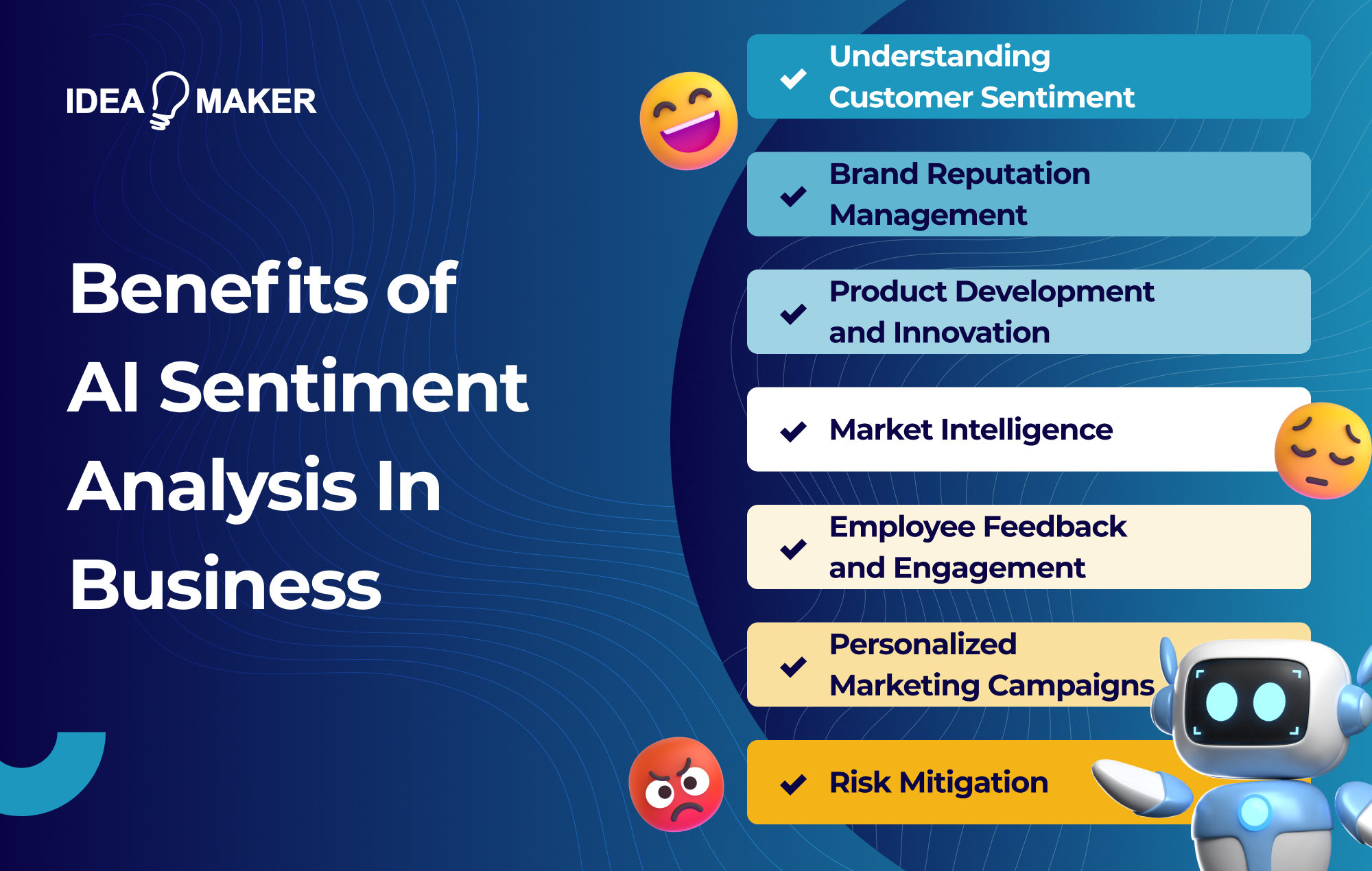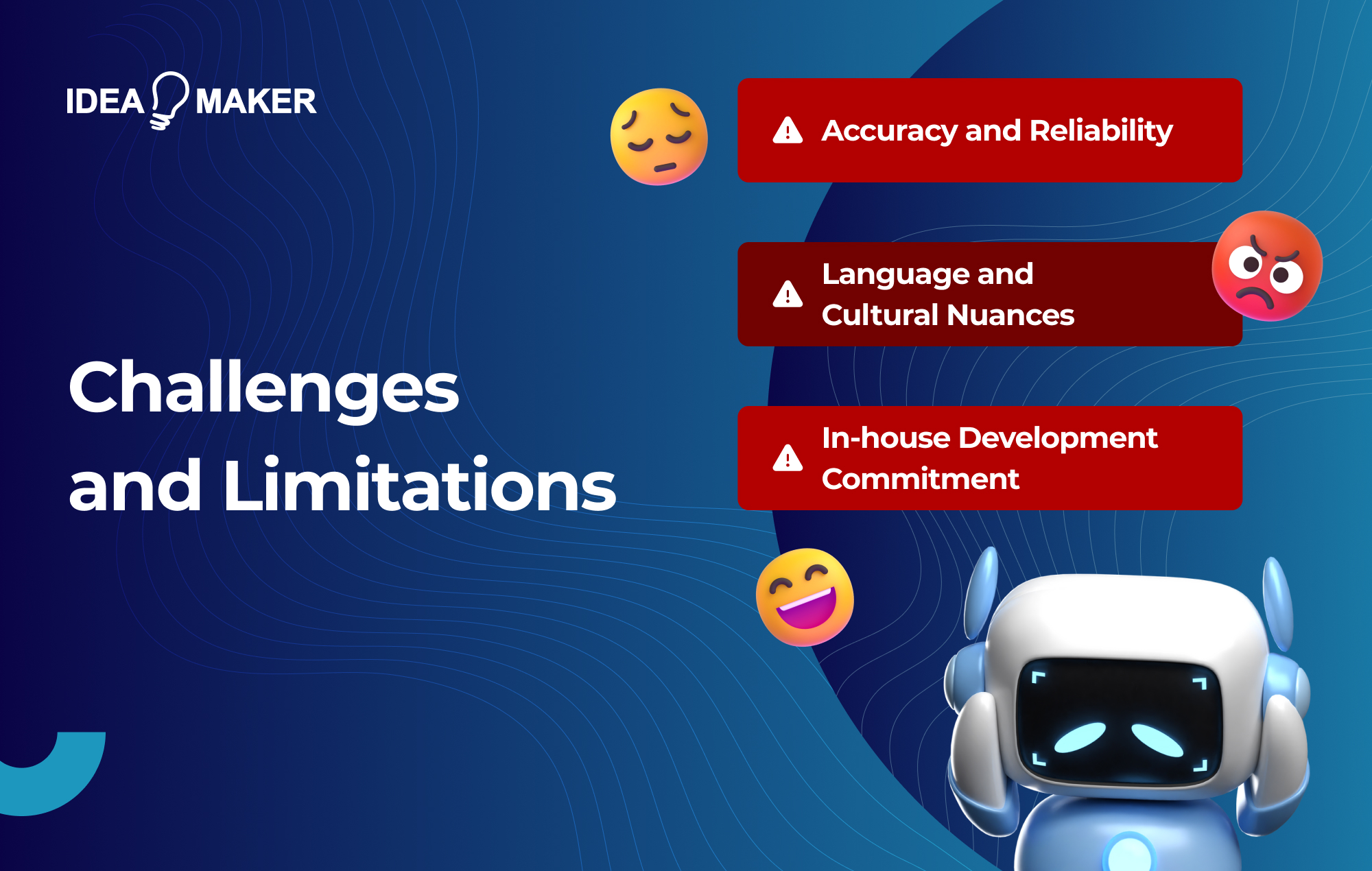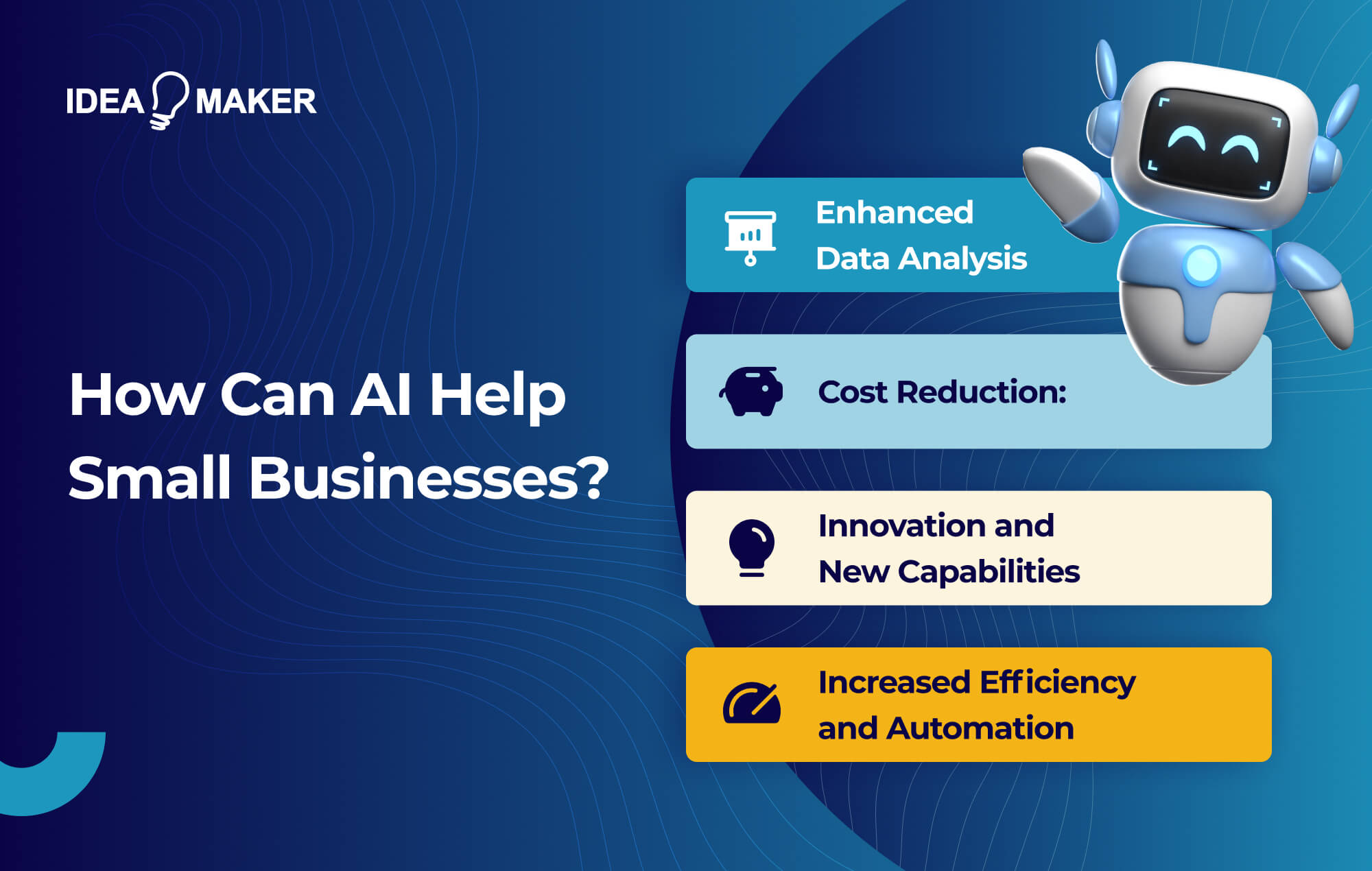Sentiment analysis has become a powerful asset for businesses looking to enhance their operations and unlock innovation. Also known as opinion mining, the natural language processing (NLP) technique leverages machine learning tools to process large amounts of data and categorize sentiments as positive, negative, or neutral. This essentially reveals the emotional tone behind digital texts, providing companies with access to valuable AI-driven actionable insights.
For example, by analyzing data from your product reviews, customer interactions, and social media channels, sentiment analysis enables you to uncover potential areas for innovation, mitigate risks, and even understand your customers better. However, effectively implementing this technique requires thoughtful planning regarding the right tools, model training, data quality, and responsible use.
So, if you’re considering incorporating sentiment analysis into your operations, then this article is for you. We’ve compiled a detailed overview of everything you need to know about the technique, including its key benefits and best implementation practices. Keep reading to learn more about how you can take your business to the next level with sentiment analysis.
Table of Contents
What Is Sentiment Analysis in AI?
Sentiment analysis is a technique in natural language processing that uses machine learning algorithms to identify and extract subjective information from text data. The goal is to determine the attitudes, opinions, and emotions within the text to understand the overall sentiment toward certain topics.
Sentiment analysis tools classify text by sentiment polarity–positive, negative, or neutral. This works by looking at words, phrases, and even emojis that are associated with subjective sentiment and emotions. For example, words like “love,” “enjoy,” and “😊” convey a positive sentiment, while words like “hate,” “problem,” and “🤬” convey a negative sentiment.
Modern sentiment analysis leverages more advanced AI techniques like:
- Aspect-based sentiment analysis: Determines sentiment towards specific aspects of products, services, and topics rather than general overall sentiment.
- Emotion detection: Detects specific emotions like joy, sadness, and anger by analyzing emotive words, expressions and contexts.
- Multilingual sentiment analysis: Processes and understands sentiment in different languages through machine translation and training language-specific models.
- Intent analysis: Identifies intentions behind the text to understand needs, expectations, and goals.
The automated nature of AI-powered sentiment analysis allows businesses to efficiently process large volumes of unstructured text data to gain rich insights at scale. More advanced NLP can provide a deeper understanding of subjective language.
Benefits of AI Sentiment Analysis In Business
Sentiment analysis delivers multifaceted business value by enabling a data-driven understanding of customers, employees, brands, markets, and risks. Powerful capabilities like aspect-based analysis, emotion detection, multilingual support, and intent analysis provide granular and actionable insights for a range of applications across functions.
Understanding Customer Sentiment
Sentiment analysis allows businesses to listen to the voice of the customer at scale by processing opinions and emotions from customer surveys, product reviews, social media, support interactions, and more. This empowers brands to understand customers better and take data-driven actions to improve satisfaction.
Improving customer satisfaction
Identifying pain points and positive experiences from customer sentiment data enables brands to address issues promptly, meet expectations, and showcase strengths. As an example, sentiment analysis of support tickets can help prioritize issues for resolution based on negative intensity.
Enhancing customer experience
By uncovering detailed insights from customer sentiment, brands can pinpoint areas for improving experiences across the customer journey–from considering feedback on new product features to addressing shipping issues. Sentiment data even allows personalization at scale by understanding individual needs.
For instance, aspect-based sentiment analysis can identify the most negatively perceived brand touchpoints. User intent analysis then reveals what customers specifically expect from those touchpoints. Together, these insights guide impactful experience optimization.
Brand Reputation Management
Sentiment analysis of unstructured data from review sites, social media, forums, and other public sources allows brands to monitor perception, manage reputation, and mitigate negative customer sentiment.
Monitoring brand perception
By processing high volumes of online conversations, sentiment analysis provides comprehensive real-time tracking of brand perception. Brands can identify trends in changing consumer opinions and catch emerging issues before they spiral. For competitive analysis, sentiment tools can compare brand perception versus industry peers.
Mitigating negative sentiment
Beyond monitoring, sentiment analysis enables timely responses to negative brand chatter by analyzing critical themes and reaching out to disgruntled customers. Whether complaints about a bad customer service experience or product quality concerns, brands can take corrective actions, address misconceptions, improve decision-making, and limit reputational damage.
In fact, a 2020 study from Bain and Company found that 54% of companies were already adopting sentiment analysis of online reviews and social media. This is expected to exceed 80%, indicating the growing value of listening to customer voices for reputation management.
Product Development and Innovation
Sentiment analysis extracts insights from customer feedback that guide data-driven product R&D, ensure alignment with consumer needs, and identify opportunities for innovation.
Identifying areas for improvement
Aspect-based sentiment analysis of product reviews on e-commerce sites can reveal specific components and features that customers are most dissatisfied with. This granular insight allows brands to pinpoint weaknesses and guide engineering efforts toward impactful product enhancements.
By analyzing detailed customer sentiment regarding pricing, usability, and missing features brands can also optimize new product development and positioning even before launch.
Innovating based on customer feedback
Sentiment analysis further allows the discovery of unmet consumer needs and desires. For example, intent analysis can uncover interests in new sustainable packaging or wish list features that engineers can design for future releases.
Ongoing sentiment monitoring even ensures brands react quickly to shifting consumer preferences–enabling agile innovation aligned with the latest market expectations rather than stagnant multi-year product roadmaps.
Market Intelligence
Sentiment analysis of online conversations, forums, reviews, and social data affords brands invaluable market intelligence to discover trends, opportunities, and competitive threats.
Predicting market trends
Changes in consumer sentiment often signal shifting market forces. Brands can leverage sentiment analysis to identify rising needs, predict adoption curves of new innovations, and get ahead of breakout product trends–be it organic food or mobile payments.
Ongoing analysis of consumer sentiment metrics also forecasts sales trajectories for products, segments, and markets–outperforming traditional surveys and focus groups.
Identifying emerging opportunities and threats
Beyond forecasting, sentiment analysis enables the discovery of tactical opportunities to capture new markets and value chains. For example, the technique can reveal consumer demand for new financial services in underbanked regions or changing media consumption habits by demographics.
Meanwhile, brands can uncover looming competitive threats based on sentiment shifts towards disruptive startups and new technologies that may soon obsolete company offerings or even detect signs of an approaching economic downturn. By keeping a pulse on high-frequency consumer sentiment, brands access real-time market intelligence for a strategic edge.
Employee Feedback and Engagement
Sentiment analysis allows organizations to listen to employee voices at scale by processing internal feedback, workplace chatter and exit interviews. The insights derived help improve corporate culture, morale, and retention.
Analyzing employee sentiment
Tools can analyze sentiment metrics from employee engagement surveys, pulse checks, email communications, and internal collaboration platforms. This gives objective insights into how employees truly feel about various issues, leaders, policies, work environments, and more.
Multilingual sentiment analysis thereby uncovers actionable insights from global workforces. Aspect-based analysis provides specific focus areas, such as sentiment toward learning opportunities, work-life balance, or management transparency.
Improving workplace culture and morale
Such granular visibility into employee sentiment guides corporate actions toward building a thriving workplace culture and morale. For instance, sentiment analysis may reveal dissatisfaction with remote work tools. The organization can address this pain point through investments and training.
Ongoing sentiment tracking also allows monitoring of the impact of cultural initiatives and programs. Are sentiments around work-life balance improving after a 4-day workweek trial? Multilingual analysis comparing regional trends is additionally powerful.
Personalized Marketing Campaigns
Sentiment analysis allows deeper personalization of marketing messages and product recommendations based on each customer’s unique interests, needs, and previous experiences.
Granular emotional insights enable hyper-targeted segmentation. For example, sentiment analysis may identify one customer segment that positively associates adventure, freedom and the outdoors with a brand. Tailored messaging and products emphasizing these themes will resonate more with this group.
Meanwhile, individual-level analysis tracks and understands sentiment changes across customer journeys to delight with contextual interactions. Abandoned cart or high bounce rate? Sentiment clues inform relevant incentives and recommendations to re-engage visitors.
In fact, personalized experiences based on sentiment analysis achieve exponentially higher satisfaction. While random recommendation tools have only 65% accuracy, suggestions tuned to customer sentiment signals from past purchases, inquiries, and reviews have over 90% accuracy.
This data-driven personalization at scale creates deeper brand connections and unmatched customer experiences from awareness to advocacy. Sentiment analysis is thereby a powerful tool for truly customer-centric marketing.
Risk Mitigation
Sentiment analysis allows brands to detect emerging issues and crises by monitoring negative sentiment spikes across customer conversations. The early signal enables proactive mitigation before problems spiral out of control.
For example, pharma companies can detect adverse reactions and complications around new drugs by analyzing online patient community forums and medical social media. Fast response to negative health signals minimizes liability, reputational damage, and expensive recalls.
Hospitality firms are using sentiment tools to identify and promptly address guest complaints about poor service or accommodation issues before they are amplified on review sites. Airlines tackle flight disruption backlash in real-time by sentiment monitoring of social chatter.
Ongoing aggregate analysis also provides disaster readiness–from keeping tabs on sentiment shifts during a global pandemic to geopolitical instability that threatens supply chains. By uncovering signals around rising consumer frustration, companies can better prepare contingency plans. For business continuity and stability, listening to shifts in customer sentiment through AI empowers risk mitigation.
Challenges and Limitations
While sentiment analysis is immensely powerful, there are some inherent challenges to consider regarding accuracy, language complexity, and ethical data use.
Accuracy and Reliability
Sentiment analysis tools can struggle with sarcasm, slang, domain terminology, and complex syntax, which pose accuracy challenges. Insufficient training data can also limit context understanding. Brands must rigorously test tools before deployment.
Language and Cultural Nuances
Sentiment expressions and emoji meanings vary across languages and cultures, making consistent analysis difficult. For global brands, training multilingual models on representative datasets and accounting for cultural nuances is essential.
Data Privacy and Ethics
Analyzing personal social data raises ethical concerns regarding consent, transparency, and privacy. Brands must establish lawful data usage practices, inform customers, and enable participation controls. There are also risks of analysis automation reinforcing harmful biases that require vigilant governance.
While these limitations do not outweigh the value, appropriately managing risks, testing accuracy, monitoring fairness, and ensuring transparency are vital for responsible sentiment analysis. The tools and techniques involved are continuously evolving to address these concerns as adoption accelerates.
Best Practices for Implementing AI Sentiment Analysis
Effective sentiment analysis implementation requires thoughtful strategy regarding the right tools, sufficient model training, and ensuring reliable data.
Choosing the right tools and technologies
Leading sentiment analysis tools leverage advanced NLP, machine learning and linguistic rules for optimal accuracy. Cloud-based APIs allow easy integration while some offer customizable on-premise enterprise solutions. Consider scalability, language needs, and industry-specific capabilities when evaluating options.
Training and fine-tuning models
While pre-trained sentiment models are available, brands achieve the best performance by further training on domain-representative datasets. Annotation for subjective language, testing with complex inputs, and iterative performance improvement are key.
Ensuring data quality and relevance
Clean, relevant textual data improves accuracy. Combining data from surveys, support channels, product reviews, and social media provides a comprehensive perspective for training and analysis. Strategic sampling curates datasets to the specific business context.
With the right tools, training and data, brands can unlock immense value from AI-powered sentiment analysis with accuracy and responsibility. Continued learning helps improve effectiveness as technology rapidly evolves.
Integrate AI Sentiment Analysis Into Business Processes with Idea Maker
Idea Maker offers expert AI development services to help brands across industries achieve competitive advantage. Our enterprise-grade solutions are trusted by leading global organizations for accurate, scalable, and responsible sentiment insights.
By leveraging Idea Maker’s sentiment analysis, brands can optimize customer and employee experiences, supercharge product innovation, monitor brand reputation, identify new market opportunities, mitigate risks, and drive measurable business impact across functions.
To learn more about integrating world-class NLP into your business, reach out to our team today. Our experts are ready to partner in your AI journey.
